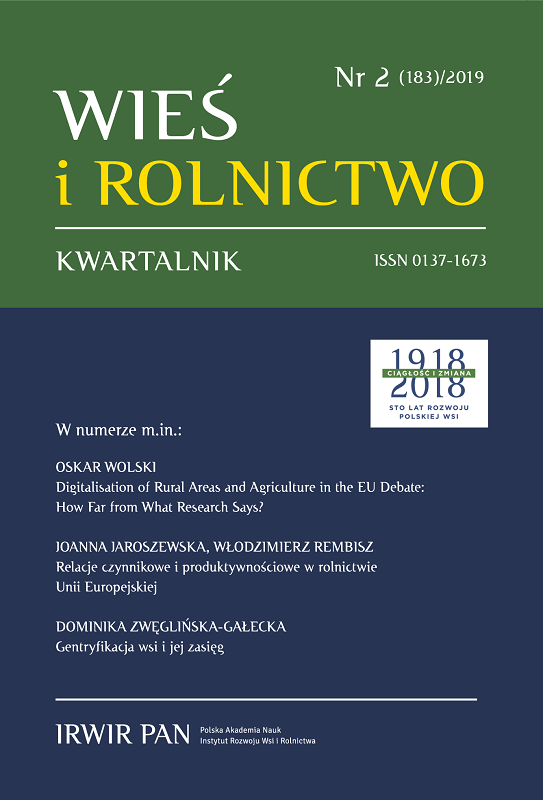Rola instrumentów finansowych Wspólnej Polityki Rolnej w przekształceniach związanych z zalesieniem gruntów o marginalnym znaczeniu dla rolnictwa
The Role of Financial Instruments of the Common Agricultural Policy in Changes Related to Afforestation of Land of Marginal Importance for Agriculture
Author(s): Sławomir SiomaSubject(s): Geography, Regional studies, Agriculture, Sociology, EU-Accession / EU-DEvelopment
Published by: Instytut Rozwoju Wsi i Rolnictwa Polskiej Akademii Nauk
Keywords: Common Agricultural Policy; afforestation of agricultural land; private forests
Summary/Abstract: One of the most important objectives of the Common Agricultural Policy(CAP) is to increase the efficiency of agricultural production by promoting technologicalprogress, the rational development of agricultural production, and the optimal use of meansof production in agriculture. By raising the income of people employed in agriculture,such activities are to ensure an adequate standard of living for people in rural areas,thereby leading to the gradual development of agriculture and rural areas. One methodfor the optimal use of means of production in agriculture is the exclusion of marginallyimportant agricultural lands from agricultural production. Afforestation of agriculturalland is, in turn, an efficient method for the management of such lands, at the sametime being the main means of achieving the objectives set out in the National ForestryExtension Programme. The programme aims to increase the forest cover of Poland andoptimise the use of land resources, taking into account the complex and heterogeneousneeds and possibilities of the country’s individual regions. The research aimed to diagnosethe spatial distribution of the afforestation carried out in 2004–2013, thereby helping toanalyse the changes in the Polish forest resources, their ownership structure and regionaldifferentiation. Particular attention was paid to the afforestation of formerly private arableland carried out using financial instruments of the CAP. In Poland, the EU CAP wasavailable under the Rural Development Programme 2004–2013, which supported changesin agriculture and rural areas. The analyses used the Central Statistical Office’s data onthe forest area of municipalities in 2004 and 2013, as well as the numerical map of afforestedlands under the Rural Development Programme 2004–2013.
Journal: Wieś i Rolnictwo
- Issue Year: 183/2019
- Issue No: 2
- Page Range: 89-107
- Page Count: 19
- Language: Polish

